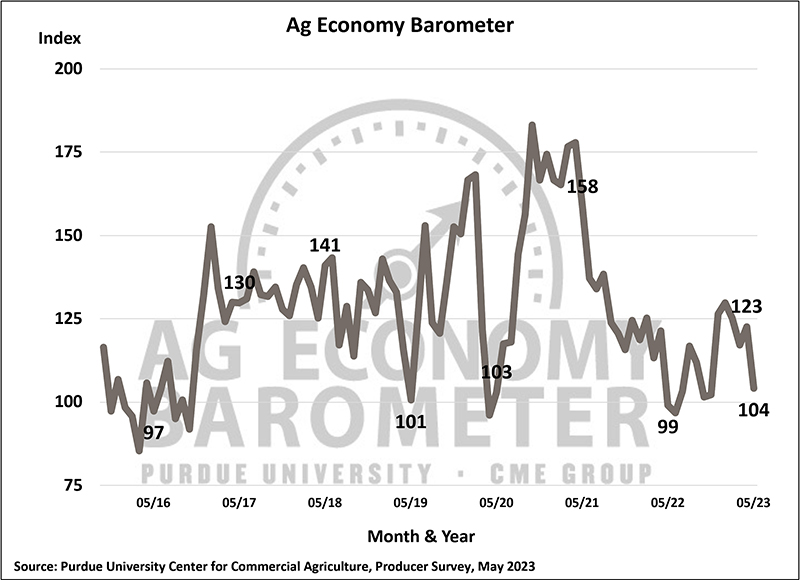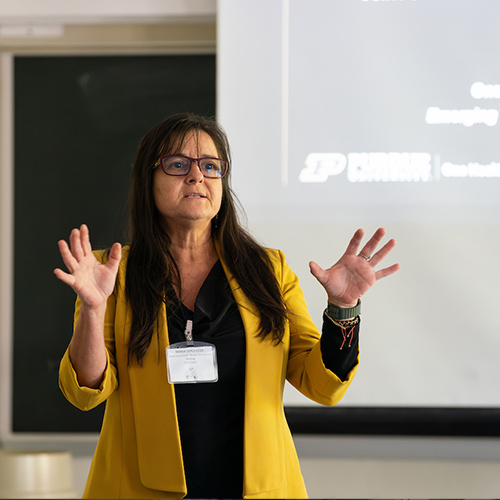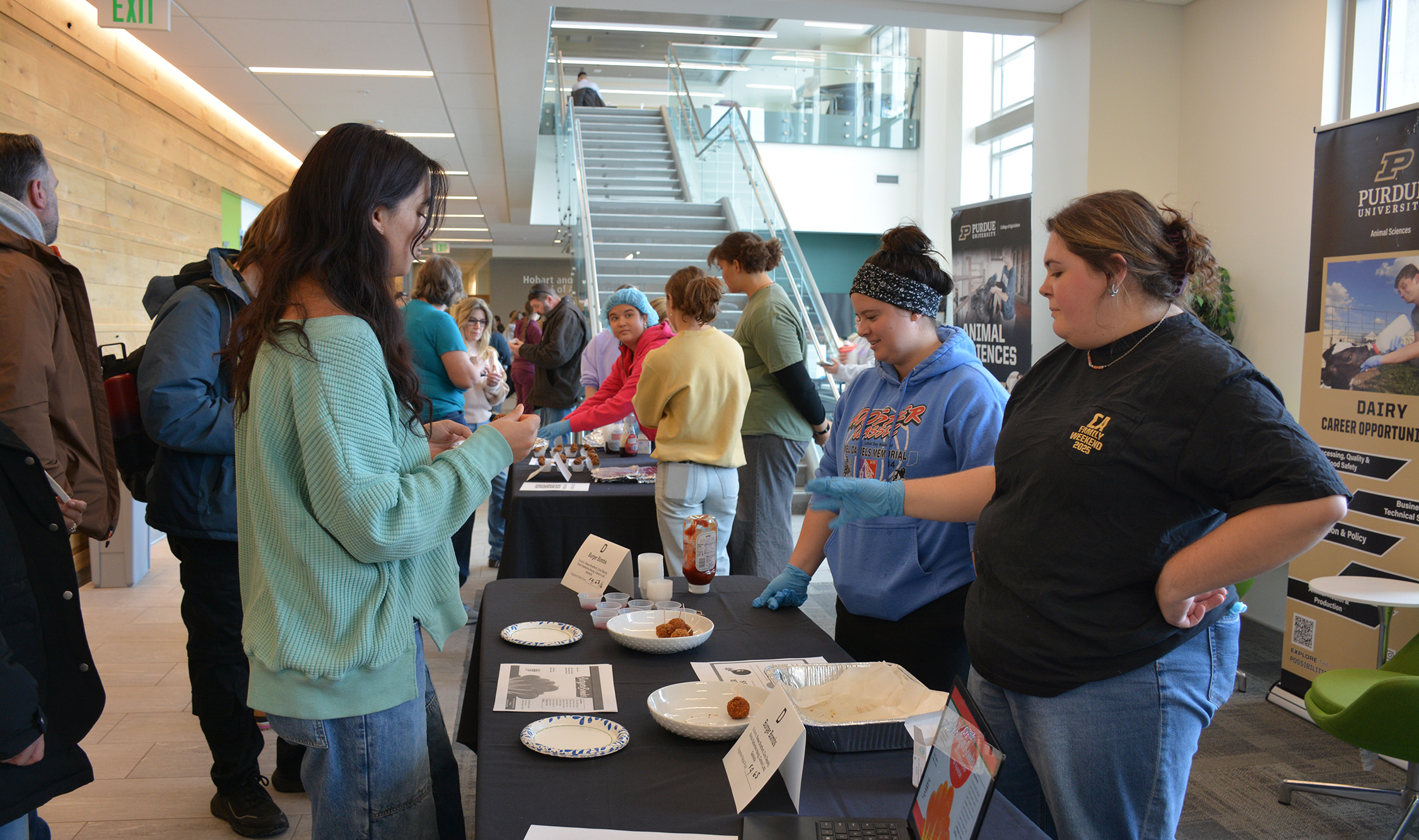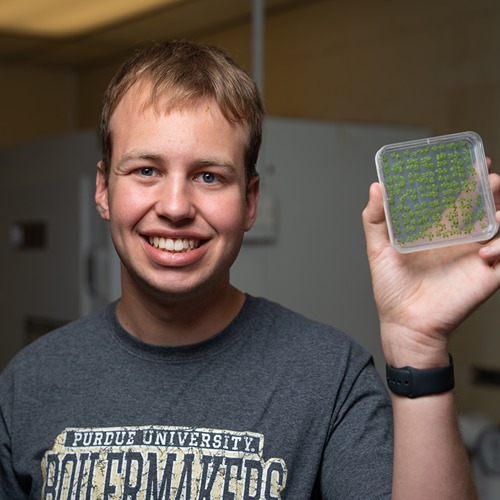Farmer sentiment sours as crop prices decline
 Farmer sentiment sours as crop prices decline (Purdue/CME Group Ag Economy Barometer/James Mintert).
Farmer sentiment sours as crop prices decline (Purdue/CME Group Ag Economy Barometer/James Mintert). Producer sentiment fell to its weakest reading since July 2022 as the Purdue University/CME Group Ag Economy Barometer declined 19 points to a reading of 104 in May. The Index of Future Expectations was down 22 points to a reading of 98 in May, while the Index of Current Conditions was down 13 points to a reading of 116. This month’s lower sentiment was fueled by drops in both of the barometer’s sub-indices and likely triggered by weakened crop prices. In mid-May, Eastern Corn Belt fall delivery bids for corn fell over $0.50/bushel (10%), and soybean bids declined over $1.00/bushel (8%), while new crop June/July delivery wheat bids declined nearly $0.50/bushel (8%), all compared to bids available in mid-April, when last month’s barometer survey was conducted. The Ag Economy Barometer is calculated each month from 400 U.S. agricultural producers’ responses to a telephone survey. This month’s survey was conducted between May 15-19.
“Producers are feeling the squeeze from weakened crop prices, which has reduced their expectations for strong financial performance in the coming year,” said James Mintert, the barometer’s principal investigator and director of Purdue University’s Center for Commercial Agriculture.
The Farm Financial Performance Index was impacted by lower sentiment, dropping 17 points to a reading of 76 in May. Crop price weakness, uncertainty related to U.S. bank failures, and rising interest rates were likely key factors behind the decline. This month, 38% of respondents said they expect weaker financial performance for their farm this year, compared to just 23% who felt that way in April. Higher input cost remains the top concern among producers in the year ahead; however, concern over the risk of lower crop and/or livestock prices is growing. This month 26% of respondents chose lower output prices as their top concern, compared with just 8% of respondents who felt that way in September. Meanwhile, nearly three-fifths (59%) of producers said they expect interest rates to rise during the upcoming year, and 22% of respondents chose rising interest rates as a top concern for their farm in the next 12 months. Additionally, 40% of farmers in this month’s poll said they expect this spring’s U.S. bank failures to lead to some changes in farm loan terms in the upcoming year, possibly putting more financial pressure on their operations.
Unsurprisingly, the Farm Capital Investment Index was also lower, down 6 points to a reading of 37 in May. More than three-fourths (76%) of respondents continue to feel now is a bad time for large investments. Among those who feel now is a bad time, two-thirds (67%) cited rising interest rates and increased prices for machinery and new construction as key reasons.
Producers’ expectations for short-term farmland values fell 13 points to 110 in May and marked the weakest short-term index reading since August 2020. In this month’s survey, just 29% of respondents said they expect farmland values to rise over the next 12 months, compared to 54% who felt that way a year earlier. In contrast, producers remain more optimistic about the longer-term outlook for farmland values, as the Long-Term Farmland Value Expectations Index rose 3 points in May to a reading of 145.
With farm bill discussions ongoing, this month’s survey asked respondents what title in the upcoming legislation will be most important to their farming operation. Nearly half (48%) of producers said the Crop Insurance Title will be the most important aspect of a new farm bill to their farms, followed by the Commodity Title, chosen by 25% of respondents. In a follow-up question, corn and soybean growers were asked what change, if any, they expect to see to the Price Loss Coverage reference prices in a new farm bill. Close to half (45%) of corn and soybean growers said they expect Congress to establish higher reference prices for both crops, with very few (10% and 13%) expecting lower reference prices for soybeans and corn, respectively.
Read the full Ag Economy Barometer report at https://purdue.ag/agbarometer. The site also offers additional resources – such as past reports, charts and survey methodology – and a form to sign up for monthly barometer email updates and webinars.
Each month, the Purdue Center for Commercial Agriculture provides a short video analysis of the barometer results, available at https://purdue.ag/barometervideo. For more information, check out the Purdue Commercial AgCast podcast available at https://purdue.ag/agcast, which includes a detailed breakdown of each month’s barometer and a discussion of recent agricultural news that affects farmers.
The Ag Economy Barometer, Index of Current Conditions and Index of Future Expectations are available on the Bloomberg Terminal under the following ticker symbols: AGECBARO, AGECCURC and AGECFTEX.
About the Purdue University Center for Commercial Agriculture
The Center for Commercial Agriculture was founded in 2011 to provide professional development and educational programs for farmers. Housed within Purdue University’s Department of Agricultural Economics, the center’s faculty and staff develop and execute research and educational programs that address the different needs of managing in today’s business environment.
About CME Group
As the world's leading derivatives marketplace, CME Group (www.cmegroup.com) enables clients to trade futures, options, cash and OTC markets, optimize portfolios, and analyze data – empowering market participants worldwide to efficiently manage risk and capture opportunities. CME Group exchanges offer the widest range of global benchmark products across all major asset classes based on interest rates, equity indexes, foreign exchange, energy, agricultural products and metals. The company offers futures and options on futures trading through the CME Globex® platform, fixed income trading via BrokerTec and foreign exchange trading on the EBS platform. In addition, it operates one of the world’s leading central counterparty clearing providers, CME Clearing.
CME Group, the Globe logo, CME, Chicago Mercantile Exchange, Globex, and E-mini are trademarks of Chicago Mercantile Exchange Inc. CBOT and Chicago Board of Trade are trademarks of Board of Trade of the City of Chicago, Inc. NYMEX, New York Mercantile Exchange and ClearPort are trademarks of New York Mercantile Exchange, Inc. COMEX is a trademark of Commodity Exchange, Inc. BrokerTec and EBS are trademarks of BrokerTec Europe LTD and EBS Group LTD, respectively. The S&P 500 Index is a product of S&P Dow Jones Indices LLC (“S&P DJI”). “S&P®”, “S&P 500®”, “SPY®”, “SPX®”, US 500 and The 500 are trademarks of Standard & Poor’s Financial Services LLC; Dow Jones®, DJIA® and Dow Jones Industrial Average are service and/or trademarks of Dow Jones Trademark Holdings LLC. These trademarks have been licensed for use by Chicago Mercantile Exchange Inc. Futures contracts based on the S&P 500 Index are not sponsored, endorsed, marketed or promoted by S&P DJI, and S&P DJI makes no representation regarding the advisability of investing in such products. All other trademarks are the property of their respective owners.





